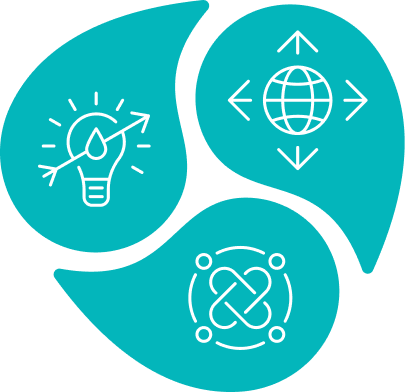Summary
The distribution of many rural communities in Brazil presents a major challenge in terms of providing access to energy. The production and consumption of energy can, however, have serious consequences for the natural environment. The energy sector in Brazil has been engaged in a process of ‘learning from mistakes'. One important lesson learnt is that establishing and maintaining a high-level policy consensus is key in achieving success.
Background
In recent years, the rate of population increase has more than halved in relation to previous decades. Intense urbanization occurred in Brazil from 1940 -1991; the urban population grew from 13 to 111 million, comprising over 75% of the total population by 1990. The rural population increased in the same period by a relatively modest amount, from 28 million in 1940 to 29.8 million in 2010. The distribution of many rural communities in Brazil presents a major challenge in terms of providing access to energy. The production and consumption of energy can, however, have serious consequences for the natural environment. Energy development in Brazil has had to keep pace with an economy that has been growing substantially. The period of 1990 - 2010 saw an increase of 40% in gross national income (GNI) per capita.
Brazil is an example of striking divergence from the ‘norm’ of energy development among upper middle-income countries and is often cited as an example of good practice in the development and implementation of energy policy. Brazil made further progress in providing electricity connections to the population, particularly in rural areas. It also met a growing energy demand with a substantial renewable element in its energy mix – particularly hydroelectric power and products from sugarcane – while emitting significantly less greenhouse gas per capita than other Latin American and Caribbean countries.
Despite the benefits secured for Brazilians in terms of their wellbeing and quality of life, the advances in energy have not come without problems and some failures. This combination of progress and setbacks makes Brazil an interesting case study for the ‘Sustainable Energy’.
Actions taken
The first electricity sector reforms of the 1990s resulted in substantial imbalances that most commentators believe were responsible for the mismatch in supply and demand that led to the 2000-2001 power crisis with rolling blackouts, alongside a period of drought that reduced the river flows and water storage on which hydropower depends. The blackouts were very unpopular and their memory is still etched in the minds of policy-makers today.
The energy sector in Brazil has been engaged in a process of ‘learning from mistakes’. The reforms of 2004-2005 left some principles in place, notably the idea of independent sector regulators and the leading role of private finance in new infrastructure, while reintroducing a greater role for state planning. Sustained high-level policy support for development of technical capacity in hydraulic engineering and associated disciplines was a major factor in Brazil’s exploitation of large hydropower from 1990 to 2010. A further driver has been improvements in the development and management of hydropower plants as individual projects or at least the capacity to deliver improved practice.
Hydropower's contribution to domestic electricity supply doubled in absolute terms between 1990 and 2010. Since then, the Ministry of Mining and Energy (MofME) continues to advance a major programme of large hydropower development. In its plan for 2005 to 2030, the MofME proposes 164 gigawatts (GW) as the country’s ‘exploitable, but as yet unrealized’ hydropower potential.
A further driver of Brazil’s progress in developing energy sector has come from sustained investment in new technologies for ethanol production. From the beginning of the ‘PRO-ALCOOL’ programme in the 1970s, there has been public investment in improvement of sugarcane yields and ethanol extraction. The existence of a sustained and robust market for ethanol products as a result of government intervention provided clear incentives for additional private research and development.
Outcomes
The structuring of the market to mandate ethanol's application as a blending agent and promote its use as a separate fuel spurred ethanol producers and car manufacturers to develop commercially viable technologies. Government subsidies have been provided to stimulate investment in renewable energy. The Government still needs to address the impact of biofuel production on water and land resources.
Between 1990 and 2010, Brazil more than doubled its energy supply and added 55 million more electricity users, supplying electricity to over 90% of all households while using more renewable energy and emitting less greenhouse gas than comparable countries. Its development of ethanol has resulted in the development of ‘flex-fuel’ car engines that can use both petrol and bio-fuel. This impressive progress was achieved by a combination of sustained leadership, responsive regulation, public and private investment in research and technology, and government programmes to provide affordable electricity as part of wider poverty-reduction efforts.
Lessons Learned
Consolidating the regulatory system. Other countries can learn from Brazil’s experience of energy regulation in terms of striking the right balance between the state and the market.
Planning for major infrastructure developments. Governments should review their systems of strategic planning for major energy investment infrastructure, particularly for large projects such as hydropower plants.
Establishing and maintaining a high-level policy consensus. Governments may usefully take active steps to establish and maintain cooperation among key government ministries, major political parties and other stakeholders on the broad outlines of energy policy.
There are differing views on the social and environmental implications of the expansion of sugarcane cultivation for biofuels production. The production requires a significant amount of land and water resources.
Thematic Tagging
Climate
,
Ecosystems/Nature-based solutions

 Case study
Case study